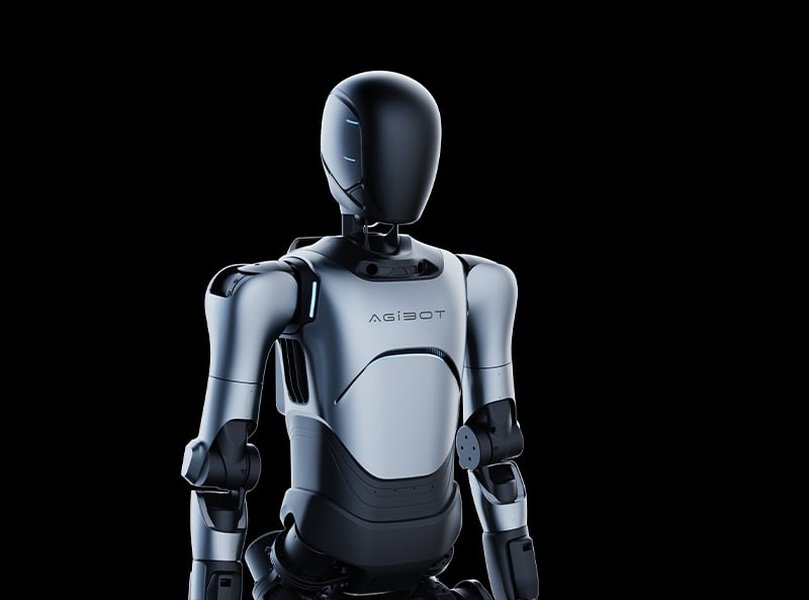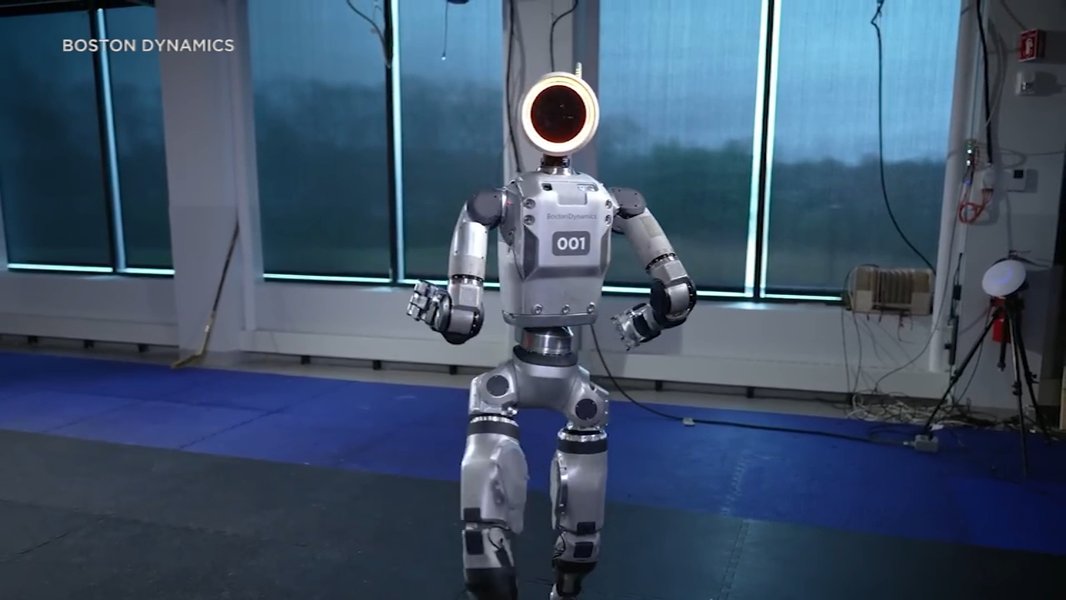
Unlocking Autonomy: The Agentic AI Blueprint for Humanoid Robots
The convergence of intelligent systems and physical form is rapidly shaping a future where humanoid robots operate with unprecedented independence.

- 1.Key Insights into Agentic AI and Humanoid Robotics
- 2.The Foundational Role of Agentic AI in Robotics
- 3.The Path to Full Autonomy: Challenges and Progress
- 4.Illustrative Examples and Future Outlook
- 5.Ethical Considerations and Societal Impact
- 6.FAQ
- 7.Conclusion
- 8.Recommended Further Reading
- 9.Referenced Search Results
Key Insights into Agentic AI and Humanoid Robotics
- Agentic AI is the indispensable intelligence layer enabling humanoid robots to transition from pre-programmed machines to truly autonomous entities.
- Advancements in generative AI are accelerating this progression, allowing robots to perceive, reason, plan, and adapt in dynamic, real-world environments.
- Practical applications are already emerging, demonstrating agentic AI's foundational role in bringing sophisticated, general-purpose humanoid robots into various industries and daily life.
The question of whether agentic AI will ultimately lead to fully autonomous humanoid robots is increasingly being answered with a resounding "yes" by current research and technological developments. Agentic AI refers to sophisticated artificial intelligence systems designed to operate with a high degree of independence, making decisions and executing actions towards complex goals with minimal human oversight. This inherent autonomy and adaptability are precisely what is needed for humanoid robots to move beyond controlled environments and function effectively in the unpredictable real world.
The core capability of agentic AI lies in its ability to perceive its surroundings, reason about situations, plan a course of action, and execute those actions. This is a significant leap from traditional robotics, which often relies on pre-programmed instructions. For humanoid robots, which are designed to interact in human-centric spaces and perform diverse tasks, these agentic capabilities are not merely advantageous but essential for their widespread adoption and utility.
The Foundational Role of Agentic AI in Robotics
Agentic AI serves as the "brain" for advanced robotic systems, imbuing them with cognitive functions that mimic human-like intelligence. This enables robots to:
- Operate Independently: Unlike traditional robots that require constant human input, agentic systems can set and pursue objectives autonomously.
- Adapt to Dynamic Environments: The real world is full of variables. Agentic AI allows robots to sense changes, process new information, and adjust their plans accordingly.
- Solve Complex, Multi-Step Problems: From navigating cluttered spaces to performing intricate tasks, agentic AI empowers robots to break down problems and execute sequential actions.
- Learn and Improve: Through iterative processes and interaction with their environment, agentic systems can learn from experience, refine their strategies, and enhance their performance over time.
This intelligent core is especially critical for humanoid robots, which are inherently designed for versatility. Their human-like form factor suggests an expectation of performing a wide array of tasks that often require nuanced understanding and flexible execution, from household chores to advanced industrial operations. Without agentic AI, such versatility would be unattainable.
Synergy with Generative AI and Physical AI
The progress in agentic AI is significantly bolstered by advancements in related fields, particularly generative AI and physical AI. Generative AI enhances the capabilities of agentic systems by allowing them to generate plans, create novel solutions, and even understand natural language commands. This enables a more intuitive interaction between humans and robots and provides robots with a richer understanding of their goals. Furthermore, the convergence with "physical AI"—the integration of AI with the physical mechanisms of robots—is transforming robots from passive tools into active, intelligent agents capable of complex interactions.
Companies like Sanctuary AI and Figure AI are at the forefront of combining these technologies, demonstrating humanoid robots capable of industrial-grade dexterity and autonomous operation. Their work underscores how cutting-edge AI is being translated into tangible robotic capabilities.

Agibot's humanoid robots are leveraging natural reasoning for real-world tasks.
The Path to Full Autonomy: Challenges and Progress
While the trajectory towards autonomous humanoid robots powered by agentic AI is clear, several challenges must be addressed for full realization:
- Physical Dexterity and Navigation: Humanoid robots need to master complex physical interactions and navigate unpredictable environments seamlessly. This involves advanced motor control, balance, and perception systems.
- Cognitive Decision-Making: Robots must be able to make sound judgments in novel situations, often under uncertainty, and prioritize tasks effectively.
- Ethical and Safety Frameworks: As robots become more autonomous, ensuring their safe and ethical operation is paramount. This requires robust protocols and clear guidelines for human-robot interaction.
- Integration and Cost: Bringing these complex systems to market at a scalable and affordable cost remains a significant hurdle.
Despite these challenges, rapid progress is evident. Humanoid robots are being designed to perform household tasks, assist in industries facing labor shortages, and even act as companions. The ongoing integration of AI-enabled "brains" into these robots is dramatically improving their ability to interact with the world and perform useful functions.
Visualizing Agentic AI's Impact on Humanoid Robotics
To better understand the multifaceted impact of agentic AI on humanoid robot development, let's look at key performance indicators:
The radar chart above illustrates the current and potential future impact of agentic AI on various aspects of humanoid robot development. We can observe that while significant progress has been made, particularly in autonomy and complex task execution, there is still immense potential to fully realize capabilities in areas like seamless human interaction and continuous learning.
Mapping the Ecosystem of Agentic AI in Robotics
To further contextualize the role of agentic AI, let's explore its interconnected components within the broader robotics ecosystem through a mindmap.
This mindmap highlights how agentic AI acts as the central intelligence orchestrating the various capabilities and attributes required for autonomous humanoid robots. It also shows the critical enabling technologies and the wide range of potential applications these advanced robots could serve.
Illustrative Examples and Future Outlook
The development of agentic AI is not confined to theoretical discussions; it is actively being deployed and tested in practical scenarios. For instance, AI-enabled robots are already making inroads in industrial settings, optimizing processes, and collaborating with human workers. In logistics and warehousing, robots equipped with agentic capabilities can navigate complex environments, identify and retrieve items, and adapt to changing inventory needs.

Boston Dynamics' Atlas robot showcases advanced physical capabilities, paving the way for more autonomous humanoid applications.
The future outlook for autonomous humanoid robots, driven by agentic AI, is transformative. These robots are envisioned to address labor shortages, improve safety in dangerous occupations, and take on dull, repetitive tasks, freeing human workers for more creative and fulfilling roles. As AI models become more sophisticated, integrating advanced reasoning and multi-agent collaboration, humanoid robots will likely perform an even broader spectrum of tasks, learn from vast amounts of data, and seamlessly integrate into daily human life.
The following bar chart illustrates the perceived readiness of different sectors for the integration of autonomous humanoid robots:
The bar chart indicates that sectors like manufacturing and logistics are currently more amenable to adopting autonomous humanoid robots due to their structured environments and clear task definitions. However, as agentic AI advances, sectors requiring more nuanced human interaction, such as healthcare and domestic assistance, are expected to see significant growth in readiness.
Ethical Considerations and Societal Impact
The advent of fully autonomous humanoid robots powered by agentic AI brings forth important ethical and societal questions. Concerns about job displacement, safety in interactions, and the implications of robots operating independently are valid and require careful consideration. Developing robust ethical frameworks and regulatory guidelines will be crucial to ensure that these advancements benefit humanity responsibly.
Table summarizing the potential impacts and considerations:
| Aspect | Positive Impact | Challenges & Considerations |
|---|---|---|
| Labor & Economy | Increased productivity, new job creation (robot maintenance, AI development), addressing labor shortages. | Job displacement, need for workforce retraining, economic inequality. |
| Safety | Performing dangerous tasks in hazardous environments, reducing human accidents. | Ensuring safe interaction protocols, liability in case of malfunction, ethical programming (e.g., Isaac Asimov's Laws). |
| Daily Life | Assistance in homes, elderly care, improved quality of life through automation of mundane tasks. | Privacy concerns, dependency on robots, potential for reduced human interaction. |
| Innovation | Accelerated scientific discovery, development of new industries and technologies. | Potential for misuse, control issues (e.g., 'Skynet' scenarios), global regulatory challenges. |
This video discusses AI robots poised to replace traditional human roles in 2025, underscoring the rapid progression driven by agentic AI capabilities.
FAQ
Conclusion
In conclusion, agentic AI is not just a contributing factor but the fundamental driver behind the emergence of autonomous humanoid robots. By providing capabilities for independent decision-making, adaptive learning, and complex task execution, agentic AI transforms robots from mere machines into intelligent agents capable of navigating and interacting with the world with unprecedented autonomy. While challenges remain in perfecting physical dexterity, ensuring ethical operation, and achieving widespread integration, the current pace of innovation strongly suggests that fully autonomous humanoid robots will become an increasingly common reality, reshaping industries and daily life in the coming decades.
Recommended Further Reading
- How is generative AI accelerating robotics development?
- What are the ethical implications of autonomous robots?
- Future applications of humanoid robots in daily life
- The role of embodied AI in next-generation robotics